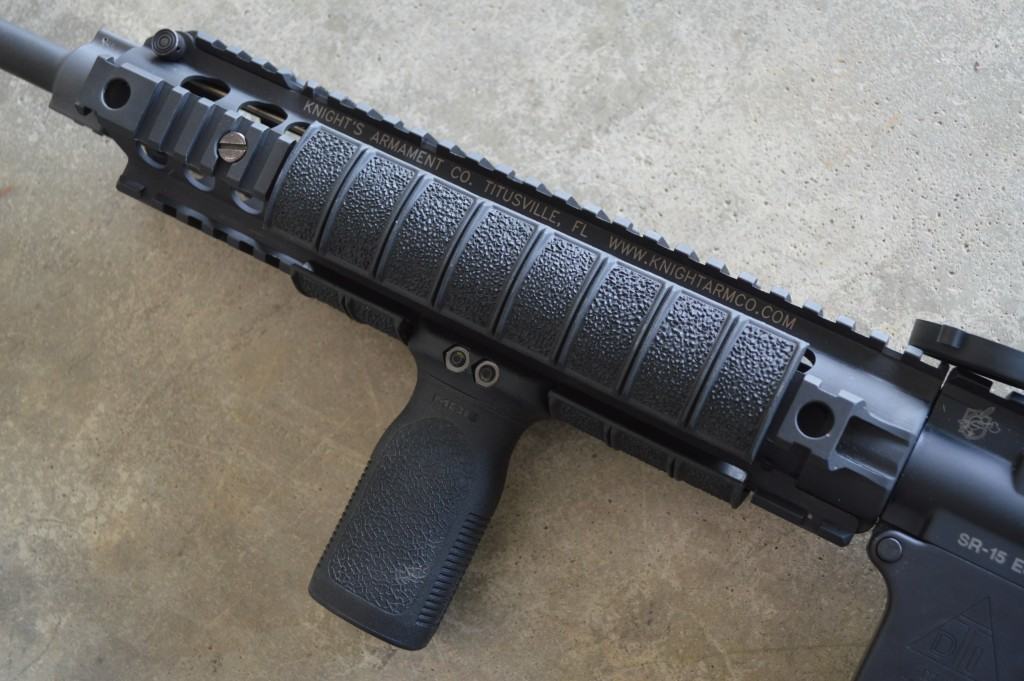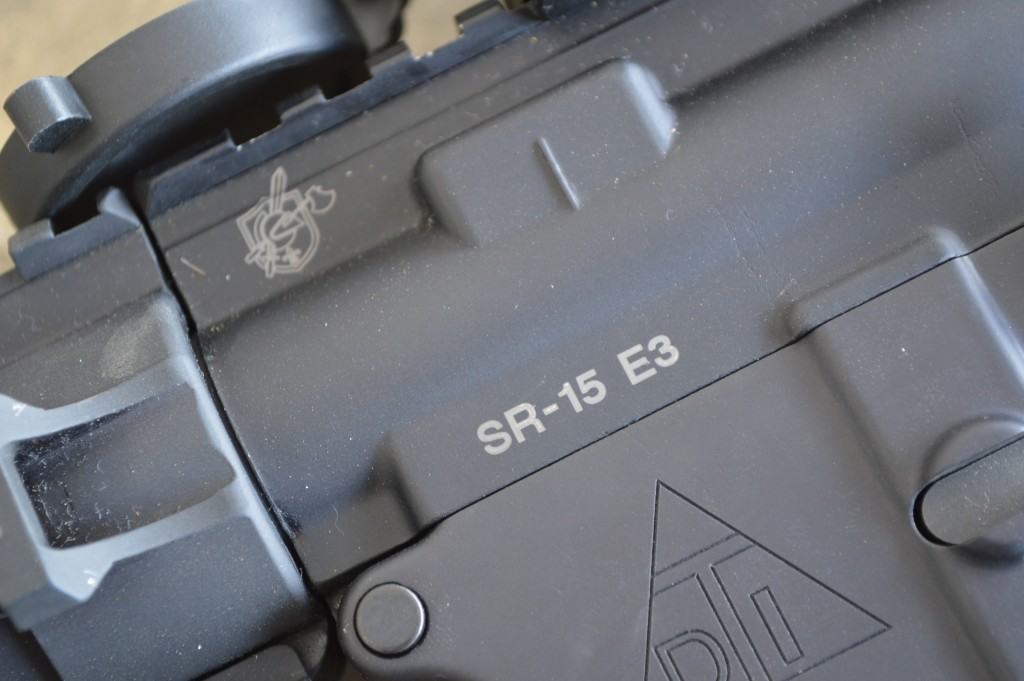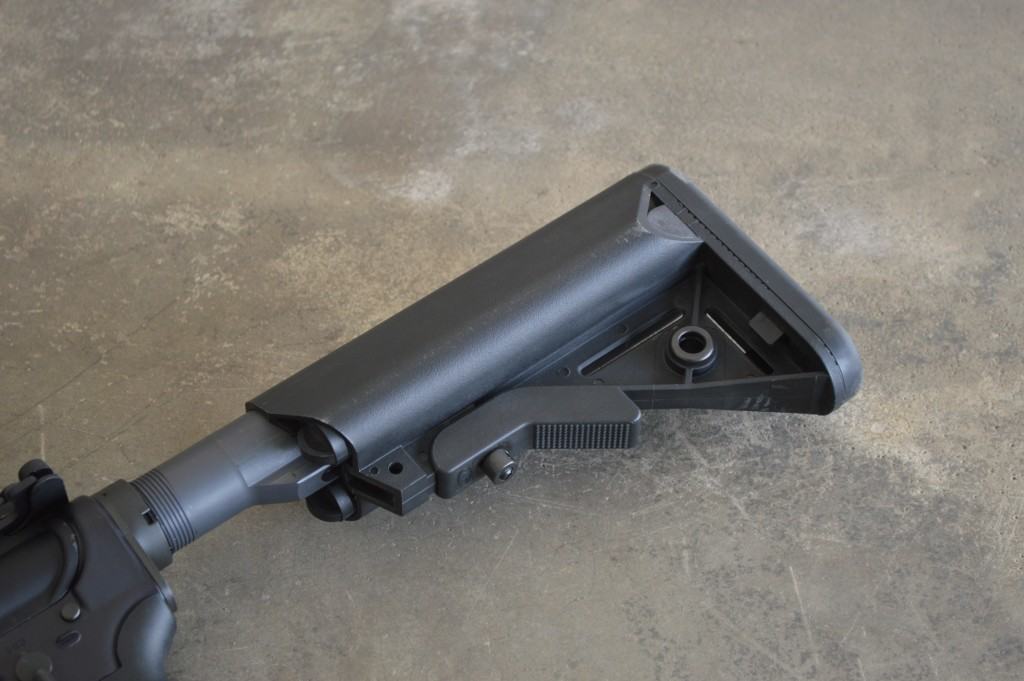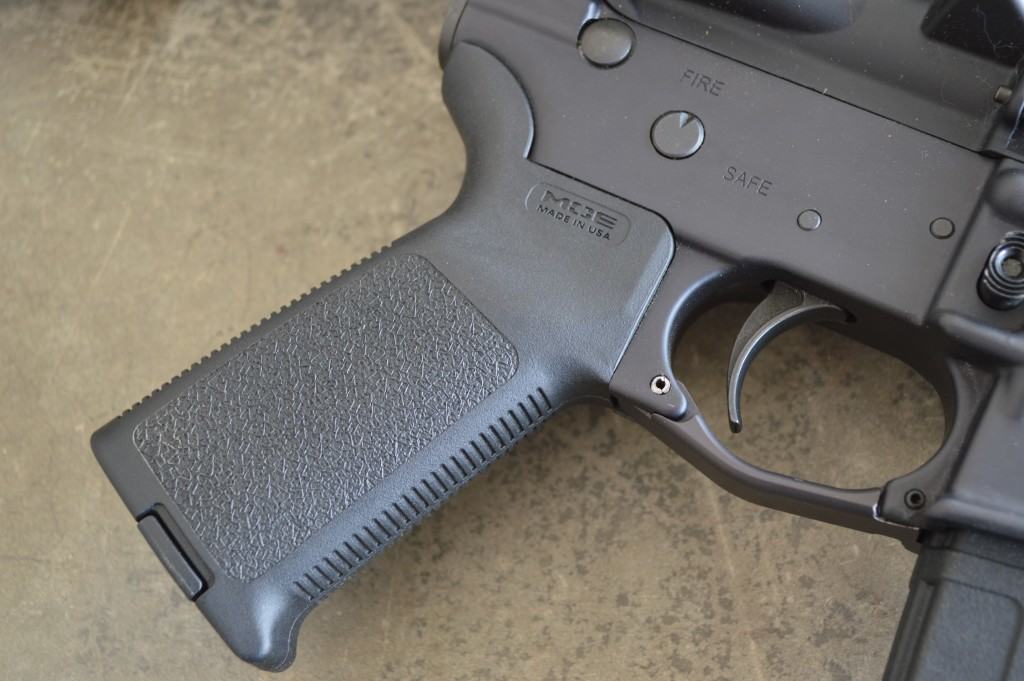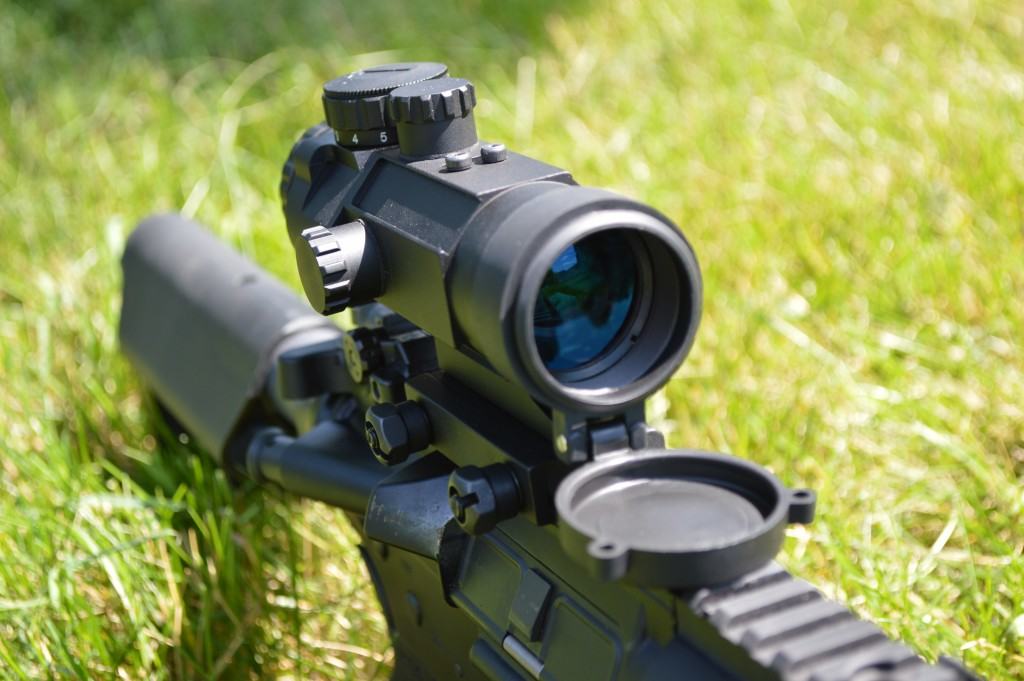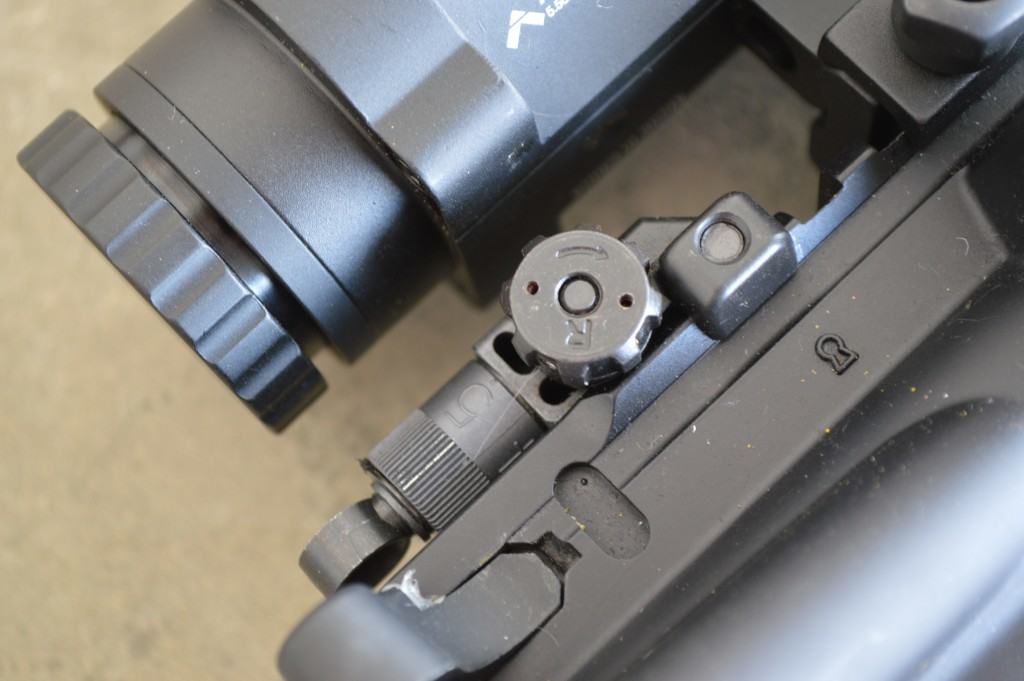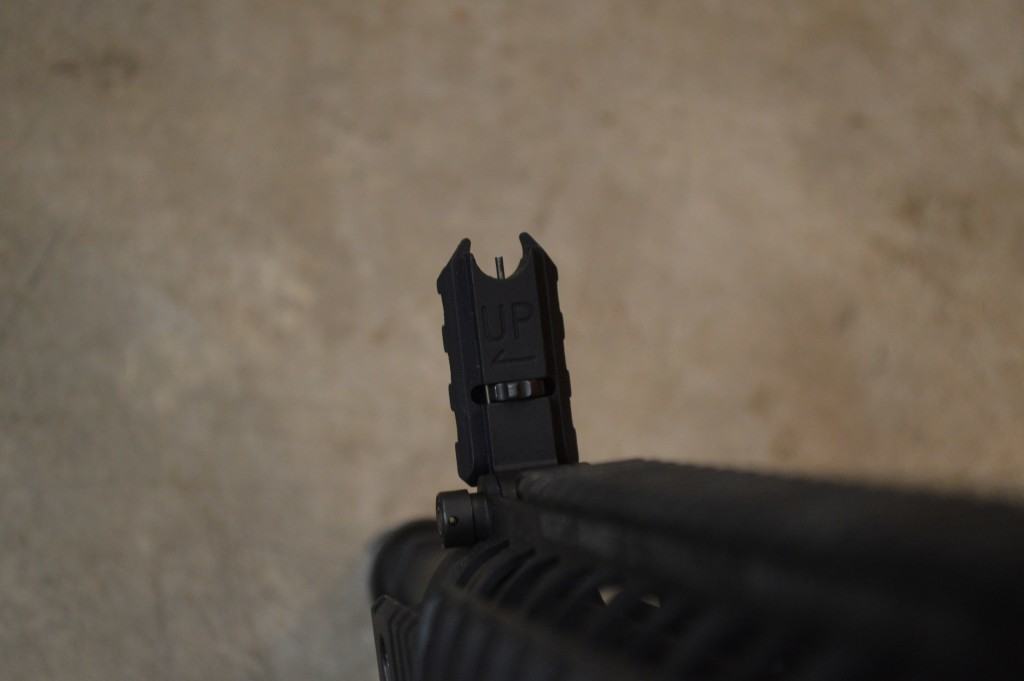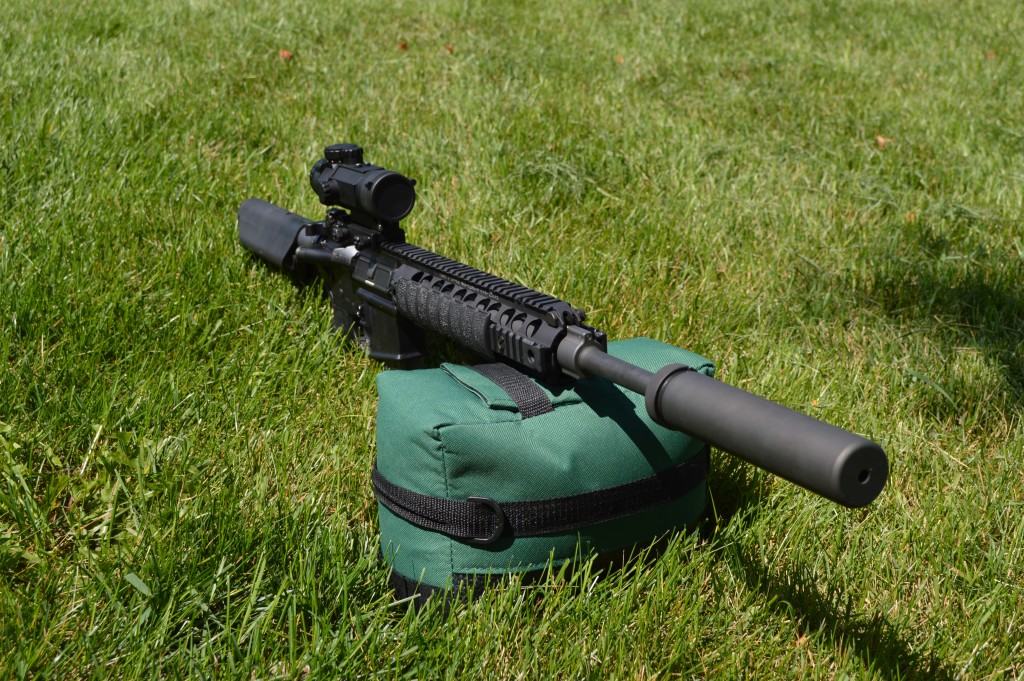Modern Rifleman’s KAC SR-15 Build
From my earliest moments in the AR-15 world, the Knight’s Armament SR-15 line has always called to me. Whether it’s the smartly designed bolt, the intermediate gas system, or the URX rails, something about the rifles makes them seem like the perfect manifestation of Eugene Stoner’s legendary design. Unfortunately, nice things often come with not-so-nice price tags and KAC is no exception in this regard. Seeing as how there was no way I could justify dropping as much as $2,000 for a complete SR-15, I set out to build a rifle with as many of the KAC features as I could, but for less than $1,250 (sans optic and suppressor).
Parts List
Upper
- KAC SR-15 Legacy (Mod 0)
- KAC flip-up sights
- KAC E3 BCG
- KAC URX II mid-length fore-end
- KAC/Colt Canada hammer forged barrel
- Magpul XT rail panels
- Magpul RVG
- SilencerCo ASR flash hider
- Primary Arms 4x Compact Prism Scope
Lower
- Del-ton forged lower receiver
- Del-ton mil-spec trigger group
- LMT SOPMOD stock (Gen 2)
- LMT receiver extension
- KAC carbine buffer
- Magpul MOE pistol grip
- Magpul Enhanced Trigger Guard
As you can see, the build is essentially an effort to retain as many of the features that make the SR-15 unique as possible, but at a lower price than the full rifle. The upper assembly was purchased used in excellent condition from another shooter and was only $900, rather than the $1,300 tag that new KAC uppers often carry. Like any SR-15, it features the ultra-durable E3 bolt with radiused lugs to prevent shearing. The gas system is KAC’s intermediate length, which is slightly longer than a standard mid-length assembly and is intended to reduce bolt speed and soften recoil.
KAC’s URX II is a bit dated at this point, but the rail system is still very functional. Newer versions of the URX, including the URX III, 3.1, and 4, all eliminate some or most of the URX II’s Picatinny rails for modular proprietary and KeyMod options. In addition, an M-LOK version of the URX 4 is on the horizon for 2016. While newer versions of the rail may be lighter, the URX II is still light enough for my tastes and, unlike younger generations, features a handy, built-in front sight.
Like many quality AR-15 variants, the SR-15 features a cold hammer-forged barrel with chrome lining. In my upper’s case, the barrel is reportedly made from MIL-B-11595 CMV and was forged at Colt Canada. Newer KAC rifles use barrels made in-house at Knight’s, but the materials are the same, and they are still hammer forged. Some shooters have stated that the new parts are more accurate than the Colt Canada ones, but I’ve not found my rifle to be problematic. Any differences between the two are going to be minute, and only the best shooters will be able to detect such accuracy discrepancies.
As part of my cost-cutting measures, I went with a standard lower receiver for this rifle. The KAC one comes with some interesting improvements over run of the mill lowers (QD sling slots, 2-stage trigger, etc.), but even used ones carry hefty price tags. I figured that I probably would not use the QD slots, and if I ever want a 2-stage trigger (and I do want one), I can always pick up a Geissele for less than the KAC. The Del-ton trigger that resides in the gun now breaks at a rather clean 6.5 lbs and is certainly good enough for defensive purposes and shooting steel targets at the range, however, something nicer would help me to really test the accuracy of KAC’s Colt-manufactured barrel.
The LMT (made by KAC) SOPMOD stock is currently my favorite collapsible option for the AR-15. While most AR-15 stocks feature angled butt pads for more comfortable use with body armor and while moving, the SOPMOD’s straight rear end fits me better. The hearty rubber pad on the butt of the stock is also a massive improvement over the meat tenderizing surface of the standard M4 version. I am always on the lookout for ergonomics enhancements, but the SOPMOD has been a favorite of mine for several years.
Rounding out the ergonomics of the rifle is a collection of Magpul accessories. The MOE pistol grip is nothing special from a comfort standpoint, but it fills the hands much better than a plain A2 grip. The XT rail panels are my personal favorites as they offer a more abrasive surface than KAC’s stock panels and can be cut to virtually any size. Lastly, the RVG is an excellent low profile vertical grip that I tend to use more as a hand stop when shooting. It also makes the rifle slightly more maneuverable with a suppressor attached.
Suppressor
Seldom do I use this rifle without my SilencerCo Specwar 556 suppressor. I’ve reviewed the Specwar before and in short, it is one of the best performing 5.56mm silencers available today. It is a bit heavy and does upset the balance of the light SR-15 build, but I think the can is worth the inconvenience. The Primary Arms scope is zeroed for use with the suppressor and I’ve found that the silencer causes about two MOA in point of impact shift. In order to counter the gassy blowback that is typical of the Specwar, I have modified the SR-15’s charging handle with silicone to create a seal at the back of the receiver.
Sights
The main sight on the rifle is Primary Arms’ 4x Compact Prism Scope. This optic is equipped with the excellent ACSS reticle developed in-house by Primary Arms. Similar to Trijicon’s horseshoe, the ACSS is an excellent all-around aiming system that is well optimized for 5.56mm ammunition. Primary Arms has recently discontinued the 4x model of this scope to make room for newer 3x and 5x variations.
In a pinch, I can also use the KAC backup iron sights (BUIS) that came with the SR-15 upper. KAC’s micro flip-up rear sight is one of the best I’ve used in that it is extremely low profile and adjustments are simple. The rear sight is adjustable for both windage and range. KAC’s front sight is integrated with the URX II rail. Since the assembly is aluminum it lacks the durability of discrete front sights, but as a last resort, the front sight should work fine. The front post is also adjustable for fine elevation tweaks.
Range Report
Two of the selling points for the SR-15 are its supposed smooth recoil and lightweight. I’ve found both of these to be true. The SR-15 without an optic weighs 6.5 lbs, and adding the 1 lb Primary Arms scope to the gun brings it to 7.5 lbs. Obviously, additional accessories like the Magpul RVG and the SilencerCo Specwar 556 add more weight (especially the 19-ounce suppressor) however, the gun itself is reasonably light. Some people’s builds will come in lighter than the SR-15, but KAC seems to have come up with a design that balances incredibly well and should be light enough to satisfy weight-conscious shooters.
The SR-15’s recoil impulse is pleasant, but not necessarily exceptional. A well tuned, standard AR-15 should be capable of similar results. Still, shooters who want a gun (or upper) that is smartly configured out of the box likely won’t miss fidgeting with adjustable gas blocks, weighted buffers, and other parts to have a very soft shooter.
It has been said that the SR-15 exhibits rather mediocre accuracy for its price. I’m no marksman, but the best 100 yard, five round grouping I’ve ever been able to get from the upper was around 2.5” in size. I’m sure a more capable shooter could wring more out of the gun, but with a lightweight, hammer forged barrel the rifle is intended to be carried and abused. 2.5” groups are respectable for a service rifle, which is in line with what KAC intended the SR-15 to be.
Conclusion
The question that always seems to accompany any KAC discussion is whether or not the juice is worth the squeeze. If you take the individual components of any KAC rifle or upper and price them out, you are likely to find that they aren’t as overpriced as many people say. However, there is also a strong argument that some of the features are unnecessary. The verdict in this case is highly individualized and the real value of a KAC rifle ultimately depends on the gun’s ability to meet its intended purpose or role.
For me, this rifle works very well. It is highly maneuverable, acceptably precise, and pleasant to shoot. The Del-ton trigger leaves quite a lot to be desired and is on my short list for upgrade. Additionally, as nice as the Primary Arms optic is, it is still heavier than an ACOG of similar size/magnification and at some point I would like to pursue a lighter scope. Despite these minor complaints, the rifle still joins me at the range for almost every trip. I shoot it suppressed practically all the time, yet I rarely clean the gun and I’ve experienced no failures since acquiring it. For a $1,250 rifle, this SR-15 build has certainly met my expectations.
An information security professional by day and gun blogger by night, Nathan started his firearms journey at 16 years old as a collector of C&R rifles. These days, you’re likely to find him shooting something a bit more modern – and usually equipped with a suppressor – but his passion for firearms with military heritage has never waned. Over the last five years, Nathan has written about a variety of firearms topics, including Second Amendment politics and gun and gear reviews. When he isn’t shooting or writing, Nathan nerds out over computers, 3D printing, and Star Wars.


